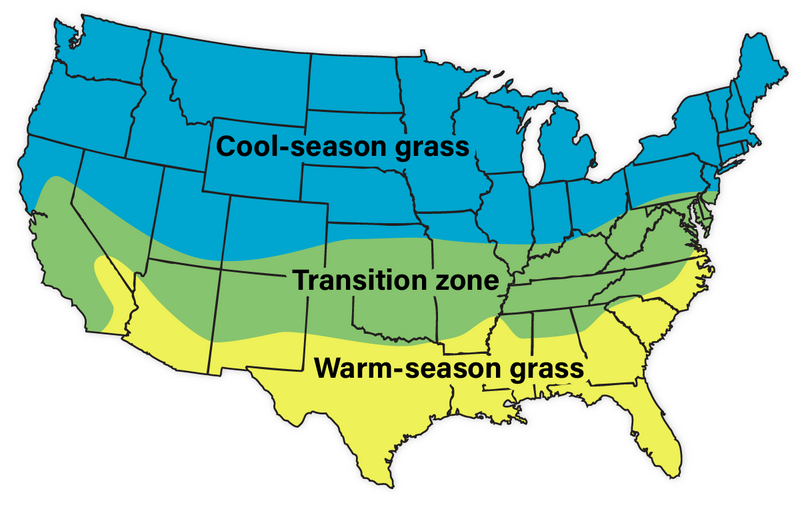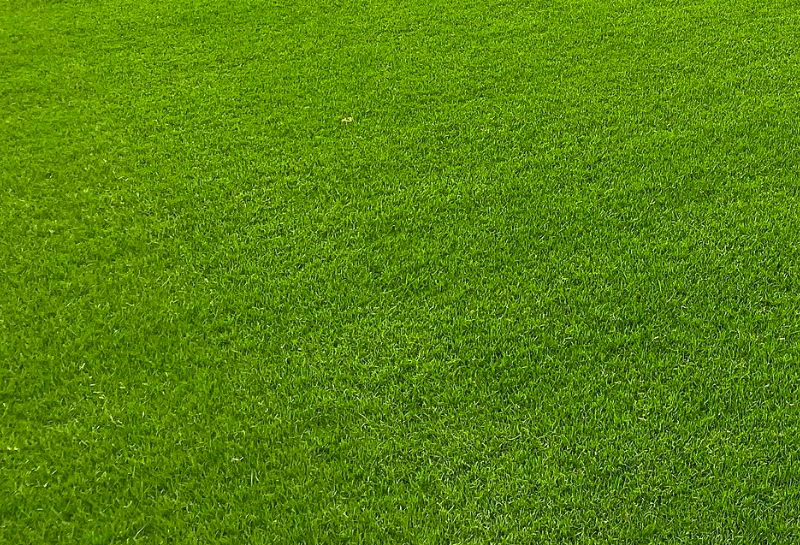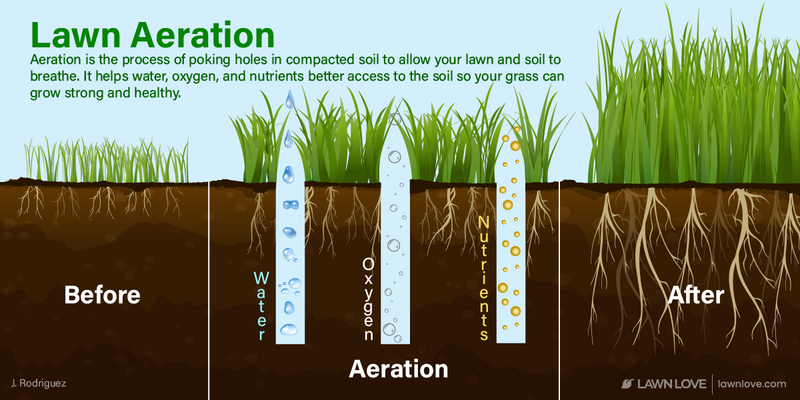
If bermudagrass were in high school, it would win the senior superlative for “most popular.” This common grass species is ubiquitous in warm-season lawns from Florida to the mid- and sometimes northern transition zone. Its fast growth rate and ability to resist and recover from wear make it a popular grass for lawns that have lots of traffic from kids or four-legged friends.
Bermudagrass at a glance
Classification: Warm-season grass
Spreads by: Stolons and rhizomes
Shade tolerance: Poor — needs full sun
Drought resistance: High
Foot traffic tolerance: High
Maintenance needs: Needs frequent mowing due to fast growth rate; develops thatch easily; needs regular fertilization
Mowing height: 1-2 inches
Potential for disease: Good resistance to disease, although diseases are common; low resistance to insects
Soil pH: 6-6.5
Soil type: Tolerates most soil types
Other notes: Bermuda spreads aggressively via its stolons (above-ground stems) and rhizomes (below-ground stems) and is able to outcompete many weeds. The downside is that it also can be a nuisance and is sometimes considered invasive. You’ll often find it has tunneled underground into flower beds and spread into neighboring lawns. Tolerant of most soil types.

What is bermudagrass?
Bermudagrass is the most widely used warm-season turfgrass in the southern U.S. It is equivalent in popularity to Kentucky bluegrass in cool-season areas. You’ll find bermudagrass used in a variety of different applications, including home lawns, bank stabilization, and in many different types of recreational and sports turf, such as golf course roughs, putting greens, parks, and school grounds.

This deep-rooted grass is installed in the warm-season grass zone (including Hawaii) and into the southern and central transition zone. Some newer varieties have greater cold tolerance and will survive in the northern transition zone, as well. Bermudagrass prefers full sun and anywhere from low to high levels of fertilizer, depending on the cultivar. Common varieties or improved common varieties are most popular in lower-maintenance settings, such as home lawns or to stabilize soil. Hybrid varieties are used in high-maintenance settings, such as sports fields, and withstand shorter mowing heights.
Bermudagrass is ideal for homeowners with active families looking for a grass that withstands frequent foot traffic and is able to recover well from damage that may occur. Both bermuda and Zoysia are often used in sports turf for these reasons, so they are both ones to consider if foot traffic and recovery from wear are important to you.
Pros and cons of bermudagrass
Before you decide on the best turf for your yard, check out the pros and cons of this popular warm-season grass.
Pros
✓ High foot traffic tolerance
✓ Recovers from damage quickly due to fast growth rate
✓ Deep roots
✓ Drought resistant
✓ Grows quickly
✓ Low to moderate water needs
✓ Improved common bermudagrass feels soft underfoot
✓ Good salt tolerance, second only to seashore paspalum
✓ Grass blades range from fine to medium in texture
Cons
✗ Low shade tolerance
✗ Low cold tolerance (goes dormant)
✗ Can spread aggressively into flower beds or other lawns
✗ Fast growth rate means frequent mowing
✗ Low insect tolerance, disease is not uncommon
✗ Tends to develop thatch

How to establish bermudagrass
Most homeowners use improved common cultivars on their home lawns. Common bermudagrass is often used for reclamation projects and hybrid bermudagrass is too high-maintenance for most homeowners. Improved common varieties are less maintenance than hybrid varieties and produce an acceptable lawn.
Most common and improved common bermudagrass varieties are established by seed. Hybrid varieties produce sterile seed so they must be established by sod, sprigs, or plugs. If you’re seeding a new bermudagrass lawn, as with all warm-season lawns, the best time to do so is late spring or early summer. Sod can be laid most any time of the year as long as the ground isn’t frozen, but for warm-season grasses, spring and early summer is still ideal. The middle of summer, the hottest part of the year, is also not recommended due to high heat and water requirements.
How much does bermudagrass cost?
Bermuda sod: Bermuda sod costs between 57 to 84 cents per square foot.
Bermuda seed: Seed costs an average of $6 per pound.
Bermuda plugs: A set of 64 sod plugs will cost around $130 for 144 square feet of established lawn.
Caring for bermudagrass
Mowing
Mowing heights vary greatly depending on your application. Hybrid varieties are often cut below one inch, but common varieties used for home lawns should be cut from 1-2 inches, depending on the cultivar and the season.
Water
Bermudagrass has low to moderate irrigation needs. The golden rule of how often to water your lawn is “when it needs it.” Plan to water whenever you see the leaves begin to fold or roll, the lawn starts to change color, or you leave footprints on the lawn as you walk on it. Generally, you’ll need to water every five to 10 days or so. Remember to water in the early morning hours, no later than 10 a.m.
If you don’t want to give the lawn supplemental water, bermudagrass is one of the best warm-season grass types because it will go dormant during an extended drought and is not likely to die. Compared to other grass types, its deep roots help the grass to keep good color and thickness longer than most other grass types. Common bermudagrasses will perform better in drought than hybrid cultivars, though. These common bermuda cultivars will stay green longer and retain more density; hybrid cultivars are more likely to thin out during periods with no water.
Fertilization
Bermudagrass needs 1-4 ½ pounds of nitrogen per 1,000 square feet. You may need supplemental phosphorus and potassium as well, so do a soil test to get specific recommendations for your lawn. Soil pH is another important factor to know, which your soil test also will measure. Bermudagrass prefers a soil pH of 6-7, so adding sulfur (if the pH is too alkaline) or lime (if the pH is too acidic) may be necessary.
Three fertilizer applications per year is ideal: late spring/early summer, mid-summer, and late summer. Wait until after spring greenup when there is no more chance of frost to do your first application. Contact your state’s Cooperative Extension office or use their online grass calendars for state-specific information.
Dethatching and aeration
Bermudagrass tends to produce thatch due to its fast-growing nature. Thatch is a layer of organic material that builds up in between the grass blades and soil level. A small level of thatch is helpful, but excess levels of thatch tend to invite insects and prevent water from infiltrating to the soil below. When thatch levels in bermuda rise above ½ inch, it’s time to dethatch the lawn.

If you have compacted soil, aeration is another necessary lawn maintenance practice. Aeration pulls cores of soil from the lawn to allow more air and water to the root zone. For warm-season lawns like bermuda, dethatching and aerating are lawn care practices best done after greenup in late spring or early summer.

Disease, insects, and weeds
Disease: Although bermudagrass has relatively good disease tolerance, diseases tend to be common.
Common bermudagrass diseases:
- Spring dead spot
- Root decline
- Dollar spot
- Leaf spot
- Large patch
- Rhizoctonia leaf and sheath spot

Insects: Bermudagrass tolerates diseases better and insects, so these insects are something to watch out for. Your state’s Cooperative Extension service will have more information (look online) for the pest susceptibility in your state.
Common bermudagrass insects:
- Bermudagrass mite
- White grubs
- Hunting billbug
- Mole crickets
- Cutworms
- Armyworms
- Sod webworms
- Nematodes (present in soil, a problem for putting greens)
Weeds: The best way to prevent a weed infestation is to have a healthy lawn. Proper fertilization, mowing, and watering will go a long way to creating a lawn that crowds out weeds and manages pests and disease. If weeds are a persistent problem, ask a local county Extension agent if there is anything you can do to better manage the lawn (soil testing, thatch removal, too much shade, etc.) since weeds are usually a sign of improper management. As a last resort, use pre- or post-emergent weed control products (chemical or organic) to manage the problem.
Some information taken from Fundamentals of Turfgrass Management, 5th ed. by Christians, Patton, and Law.
If you think a bermudagrass lawn may be right up your alley, contact one of our local lawn care professionals. They can help you select, install, and care for your grass so you can spend your free time doing what matters most.
Main Photo Credit: Scot Nelson | Flickr | Public Domain